Fringe Tree
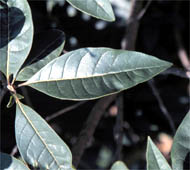
Leaf Characteristics
- broad, flat leaves
- simple leaves
- not lobed
- smooth margins, entire
- opposite leaves
- shorter, eliptical
- leaves slim
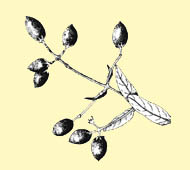
Fruit Characteristics
- other fruit (not cone, winged, acorn, or in pod or capsule)
- without husk or capsules
- loose, not packed tightly together
- fruit with pit
- whole fruit less than 1 inch
- fruit without strap-like modified leaf
- not like rasperries
- fruit not at end of single stalk
- loosely clustered
- leaves not modified
- ovoid, blue, about 1/2" to 1" long
- fruit not at ends of club-shaped stalks
Fringe Tree
Chionanthus virginicus
This is a small tree that sometimes grows as a large shrub. The trunk is short, usually branching near the ground. The bark is brown with red-tinged scales. The Fringe Tree prefers moist soils, and it most commonly grows along stream banks and swamp borders. The Fringe Tree ranges from southern New Jersey and southeastern Pennsylvania south to Florida, and westward to Texas. In Ohio it occurs in a few southern and southeastern counties. The wood of the Fringe Tree has no commercial value. Landscapers, however, often use it for its ornamental value as a garden or lawn tree.
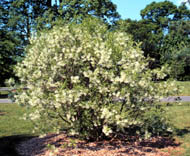 Tree Size
height 10' - 20'
diameter 0.5' - 1'
Tree Size
height 10' - 20'
diameter 0.5' - 1'
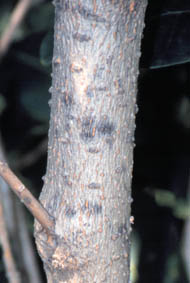 Bark
Bark
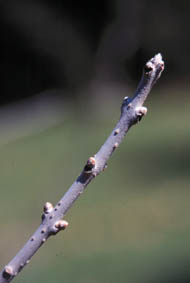 Twig and Buds
Twig and Buds
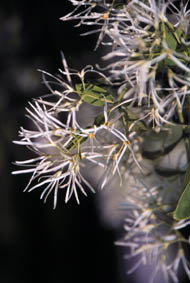 Flower
Flower 